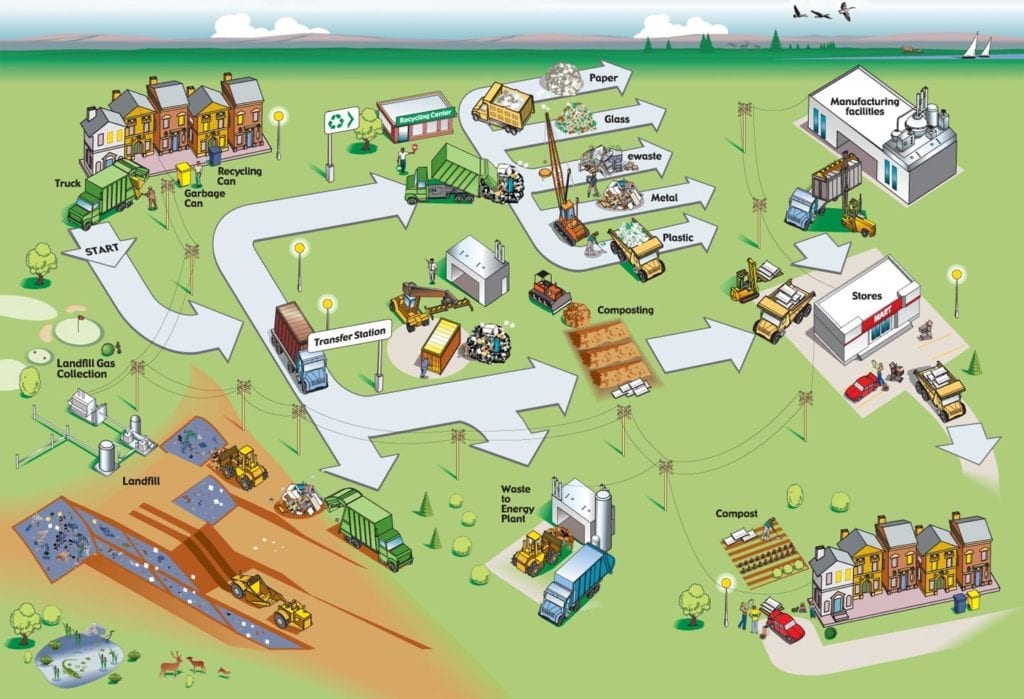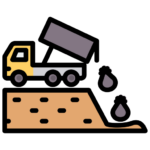Where Does Our Trash and Garbage Go?
The United States generates close to 251 million tons of trash every year. Sound like a lot? It is. In fact, the US is the top producer of municipal solid waste (MSW) in the entire world. So, once you throw your trash in the dumpster, what is its next destination? This is the story of the journey of your trash!
How Much are We Trashing?
The landfill is by far the most popular destination for MSW, though some cities like San Francisco and Seattle can recycle more MSW than they send to the landfill. Chances are, however, that your trash is probably ending up at the dump. Some of the bigger states, like Texas, Florida, and Nevada, are dumping over 10 million tons of waste each year.
While wasting is rampant in the United States, we are also recycling millions of tons a year. The biggest recycling states include California, the Carolinas, and Minnesota. Some states provide incentives to recycle, such as 5 or 10 cents back on recycled aluminum cans, glass bottles, and plastic jugs. States around the country also have mandates that require recycling certain materials, like aluminum cans or plastics.
Where Does it All Go?
Whether we are throwing items away or recycling them, the trash has to end up somewhere. If it’s picked up in a trash can or a rented dumpster, the trash could be taken to four destinations:
- Landfills
- Recycling centers
- Composters
- Waste-to-energy plants
These different facilities can be found nationwide, but many factors contribute to where they are located, such as local regulations and state mandates.
But Where Does it Go?
Your trash isn’t going straight to a landfill. There are two destinations that your trash could visit first:
- Central location where garbage trucks can drop off trash and continue making pick-ups
- Don’t have to leave the city to make a direct dump at a landfill or disposal facility
- Halfway point to compact and consolidate trash before the next destination
- Trash loaded into trucks to take it to the final destination
- Reduces costs and frees up regular garbage trucks to continue normal pick-up days
Material Recovery Facilities (MRFs)
- Actively sort debris to recover useful materials from the waste stream
- Use magnets, shredders, and current separators to do so
- Some transfer stations have MRFs, but most are stand-alone
Where Does the Journey End for Our Trash?
After its time at the transfer station or MRFs, your trash then travels to be stored, recycled or used to make energy.
Landfills
The majority of our garbage ends up in a landfill. When you think “landfill,” you may think of an open dump made up of a mountain of garbage. Thanks to the Resource Conservation and Recovery Act (RCRA), however, open dumps are no longer allowed. Since 1976, the EPA has the authority to control hazardous waste had from the “cradle to the grave,” which includes the generation, transportation, treatment, storage and disposal of hazardous waste. In 1986, the RCRA was amended to address environmental problems resulting from hazardous waste.
Recycling Facilities & Composters
About one-third of our solid waste goes to either a recycling or composting facility. What’s the difference?
- Recycling facilities turn aluminum, plastics, paper, and glass into new products
- Composting facilities turn foods and agricultural waste into compost
Incinerators
An incinerator is a large industrial furnace that is specifically designed to burn MSW. Incinerators are kept at 1,800 degrees Fahrenheit to ensure all trash is converted to ash. Incinerated trash has 95% less volume, which drastically reduces the amount of landfill space needed. Additionally, the heat from incinerators can provide both heat and electricity to the surrounding area.
Anaerobic Digestors
Put organic materials to use by creating energy and fertilizer. These machines can be found on a farm where organic waste is readily available. Some farms will also accept food waste from restaurants, grocery stores, and communities.

The journey of our trash takes us through a complex network of destinations, reflecting the magnitude of waste generated in the United States. From the initial disposal in dumpsters and trash cans, our waste embarks on a path that includes transfer stations and Material Recovery Facilities (MRFs) for consolidation and sorting. The final destinations vary, with landfills receiving the majority of our garbage, recycling facilities and composters processing a significant portion, and alternative methods like incinerators and anaerobic digesters contributing to sustainable waste management. Despite the colossal volume of waste produced annually, efforts are being made to enhance recycling rates and adopt environmentally friendly practices, showcasing the ongoing commitment to mitigating the impact of our waste on the planet. Understanding the journey of our trash prompts us to reflect on responsible waste disposal practices and the need for continued innovation in waste management for a more sustainable future.
Now that you are an expert of where your trash goes give us a call to get started on your next project!






